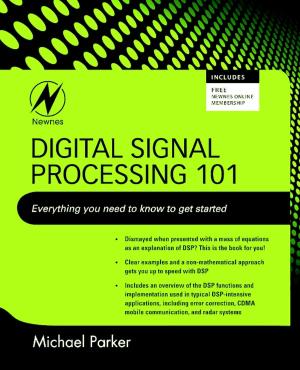Reading as a Perceptual Process
Nonfiction, Health & Well Being, Psychology, Experimental Psychology, Neuropsychology| Author: | ISBN: | 9780080515762 | |
| Publisher: | Elsevier Science | Publication: | August 4, 2000 |
| Imprint: | North Holland | Language: | English |
| Author: | |
| ISBN: | 9780080515762 |
| Publisher: | Elsevier Science |
| Publication: | August 4, 2000 |
| Imprint: | North Holland |
| Language: | English |
This book is divided into five sections dealing with various fundamental issues in current research: attention, information processing and eye movement control; the role of phonology in reading; syntax and discourse processing and computational models and simulations. Control and measurement of eye movements form a prominent theme in the book. A full understanding of the where and when of eye movement control is a prerequisite of any complete theory of reading, since it is precisely at this point that perceptual and cognitive processes interact.
Amongst the 'hot topics' included are the relation between parafoveal and foveal visual processing of linguistic information, the role of phonology in fluent reading and the emergence of statistical 'tuning' approaches to sentence parsing.
Also discussed in the book are three attempts to develop quantitative models of reading which represent a significant departure in theory-building and a quantum step in the maturation of reading research.
Much of the work reported in the book was first presented at the 5th European Workshop on Language Comprehension organised in April 1998 which was held at the CNRS Luminy Campus, near Marseilles. All contributions summarise the state-of-the-art in the relevant areas of reading research.
This book is divided into five sections dealing with various fundamental issues in current research: attention, information processing and eye movement control; the role of phonology in reading; syntax and discourse processing and computational models and simulations. Control and measurement of eye movements form a prominent theme in the book. A full understanding of the where and when of eye movement control is a prerequisite of any complete theory of reading, since it is precisely at this point that perceptual and cognitive processes interact.
Amongst the 'hot topics' included are the relation between parafoveal and foveal visual processing of linguistic information, the role of phonology in fluent reading and the emergence of statistical 'tuning' approaches to sentence parsing.
Also discussed in the book are three attempts to develop quantitative models of reading which represent a significant departure in theory-building and a quantum step in the maturation of reading research.
Much of the work reported in the book was first presented at the 5th European Workshop on Language Comprehension organised in April 1998 which was held at the CNRS Luminy Campus, near Marseilles. All contributions summarise the state-of-the-art in the relevant areas of reading research.















